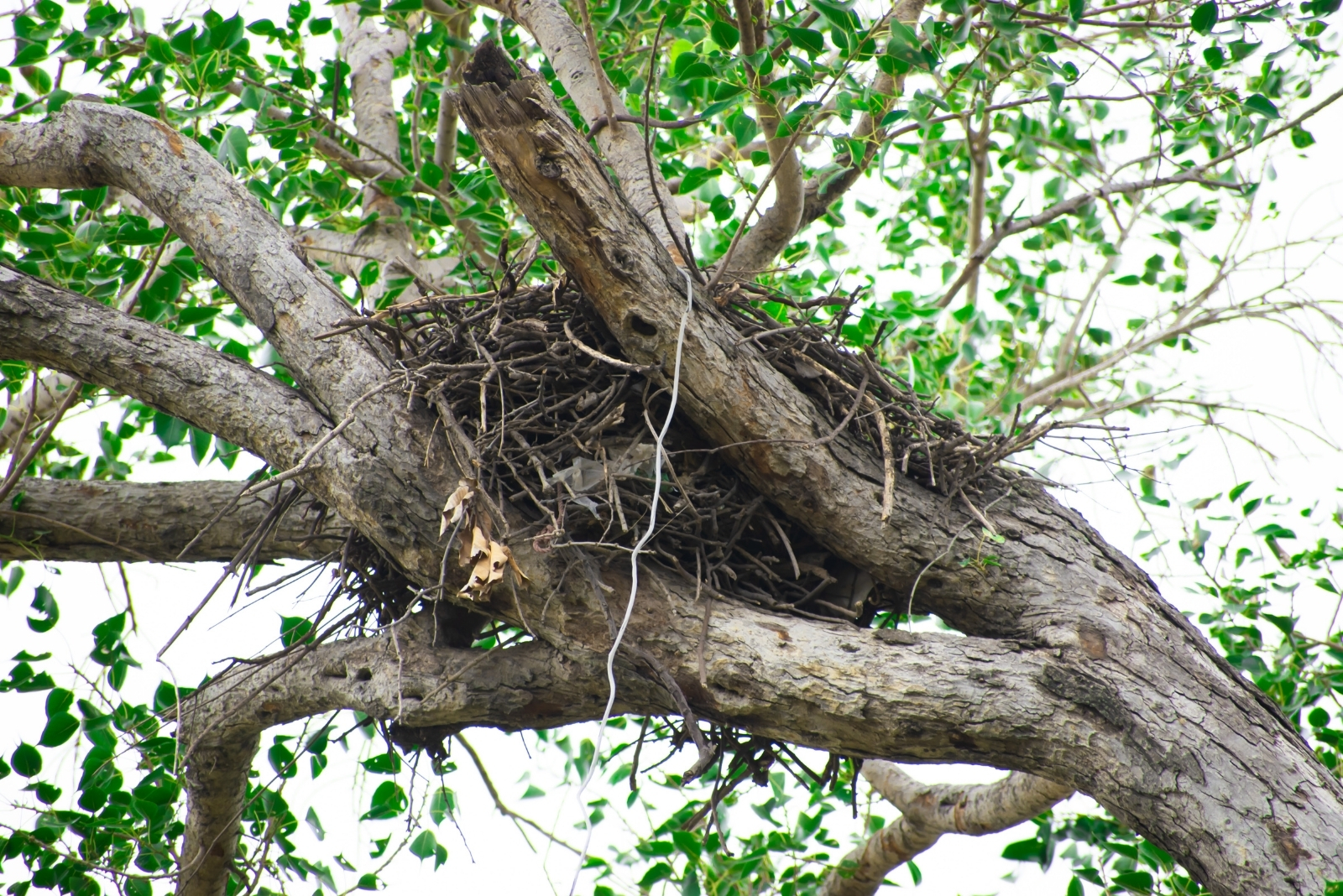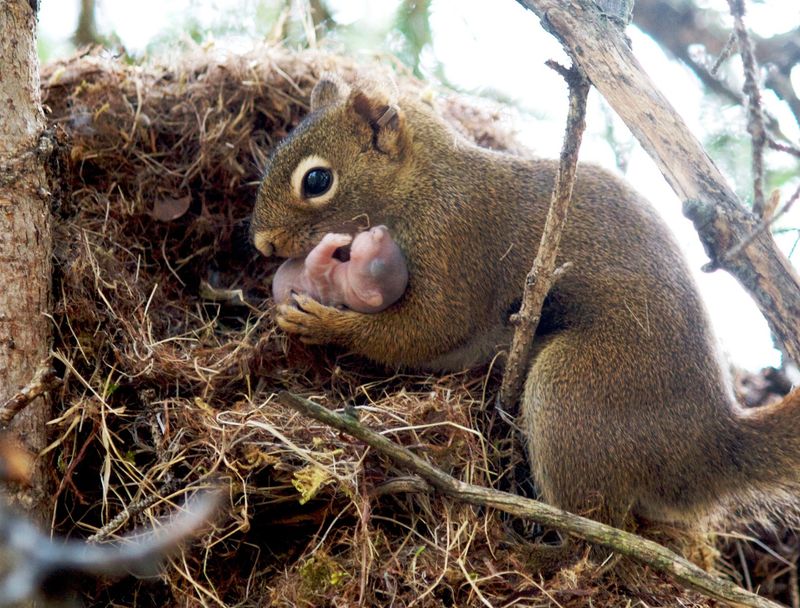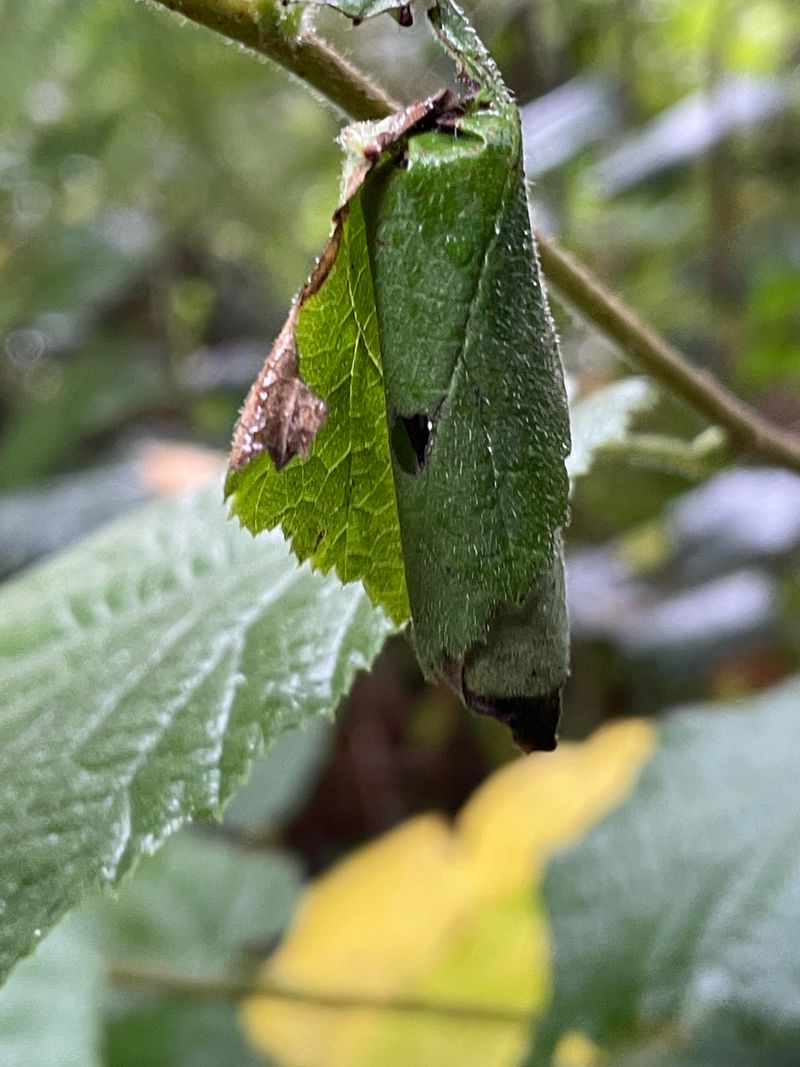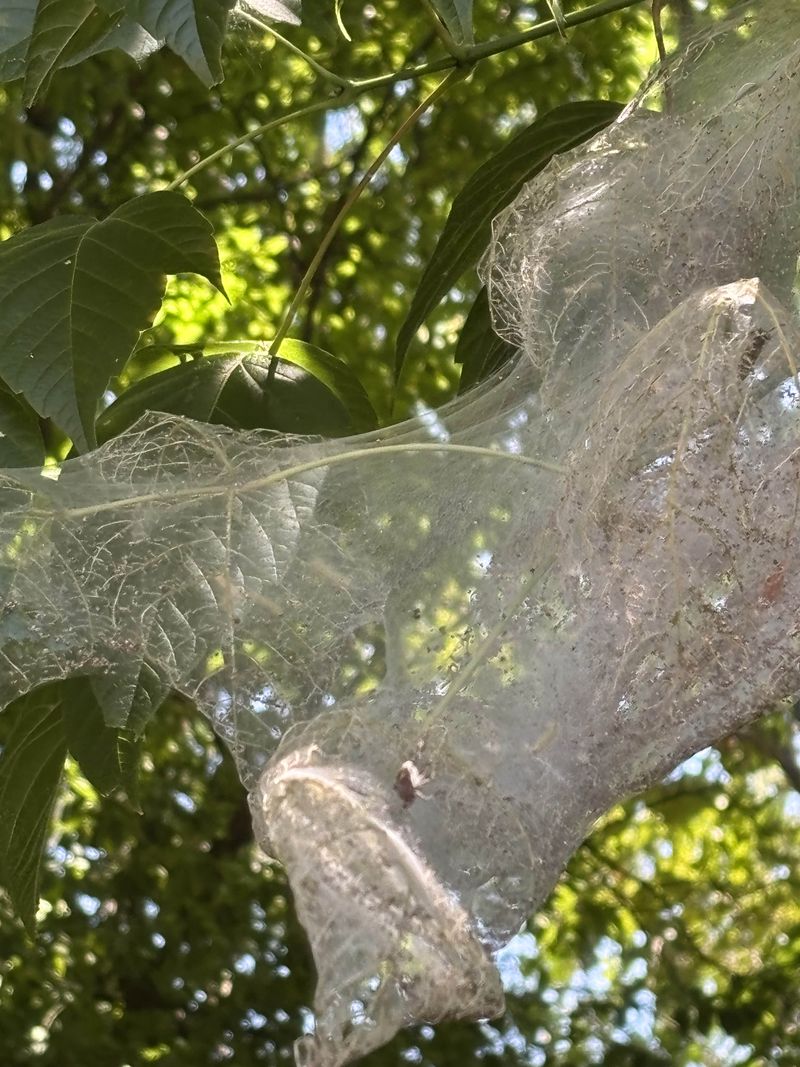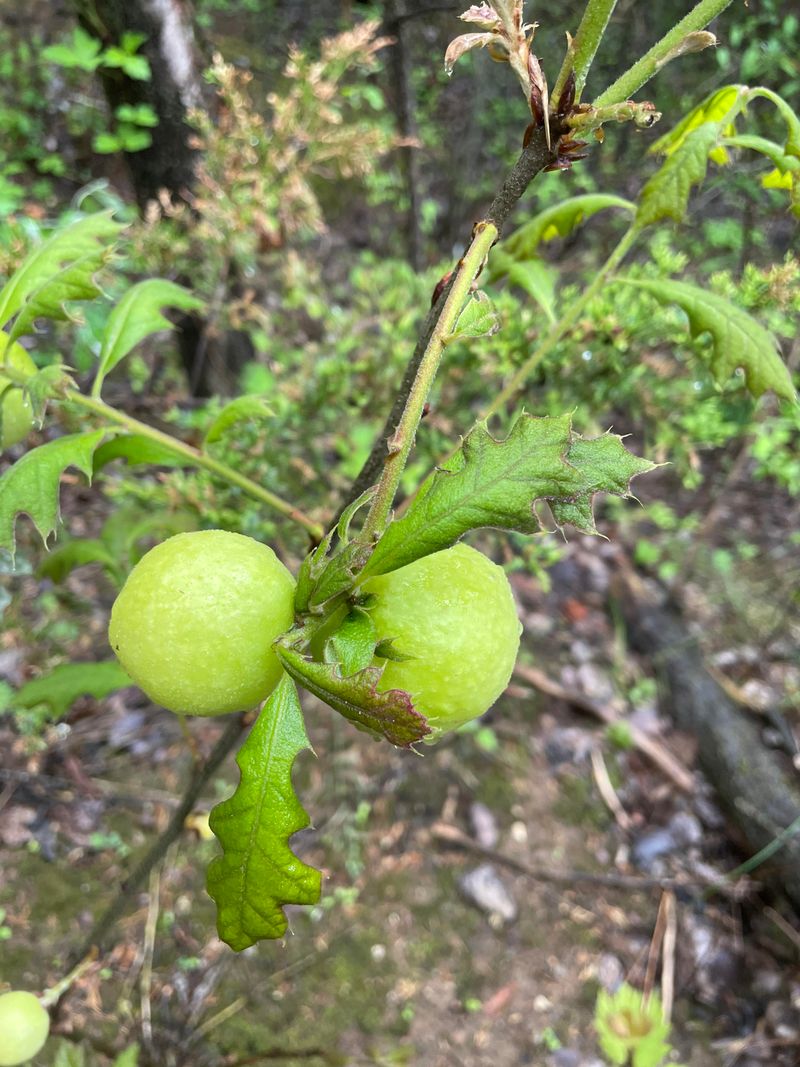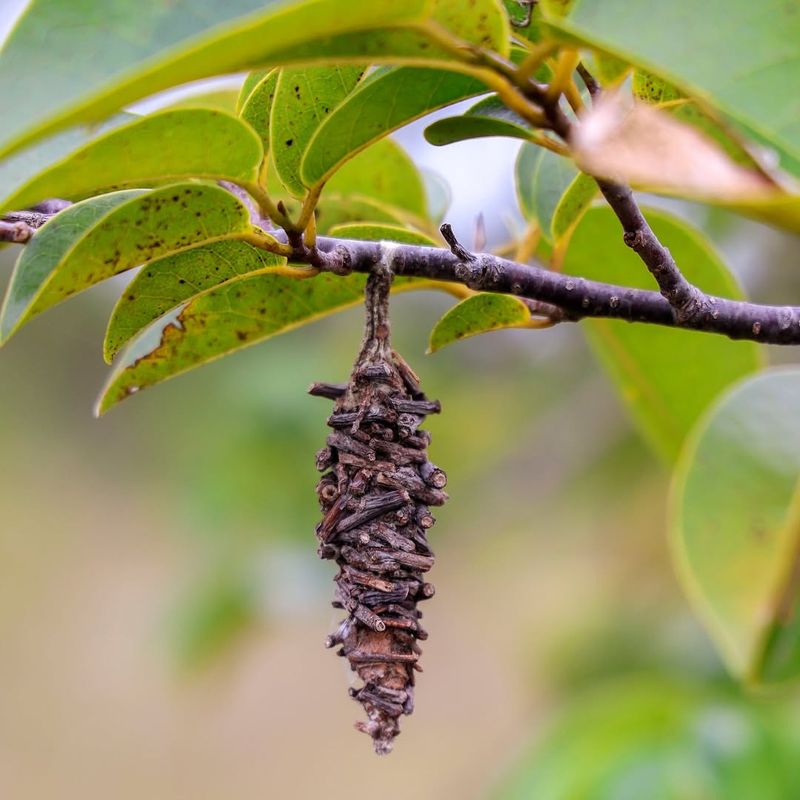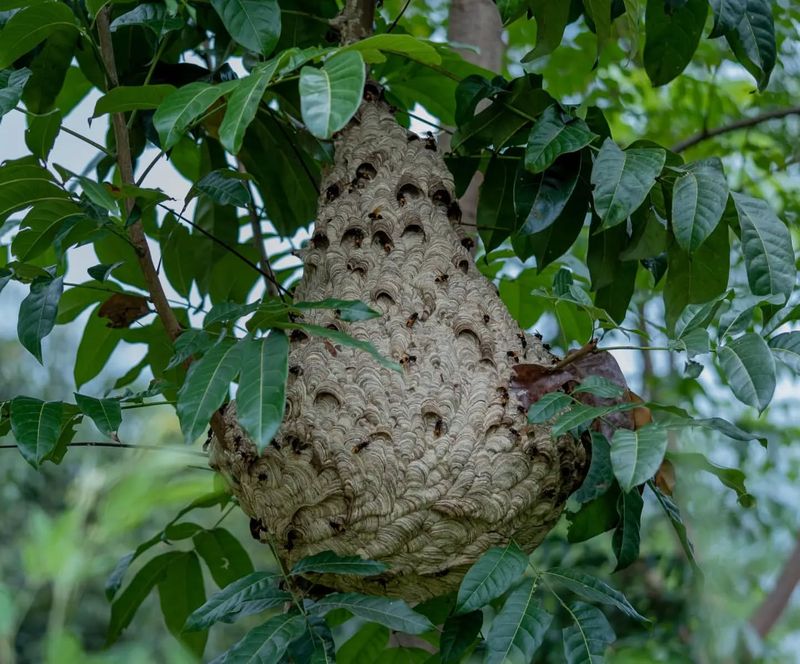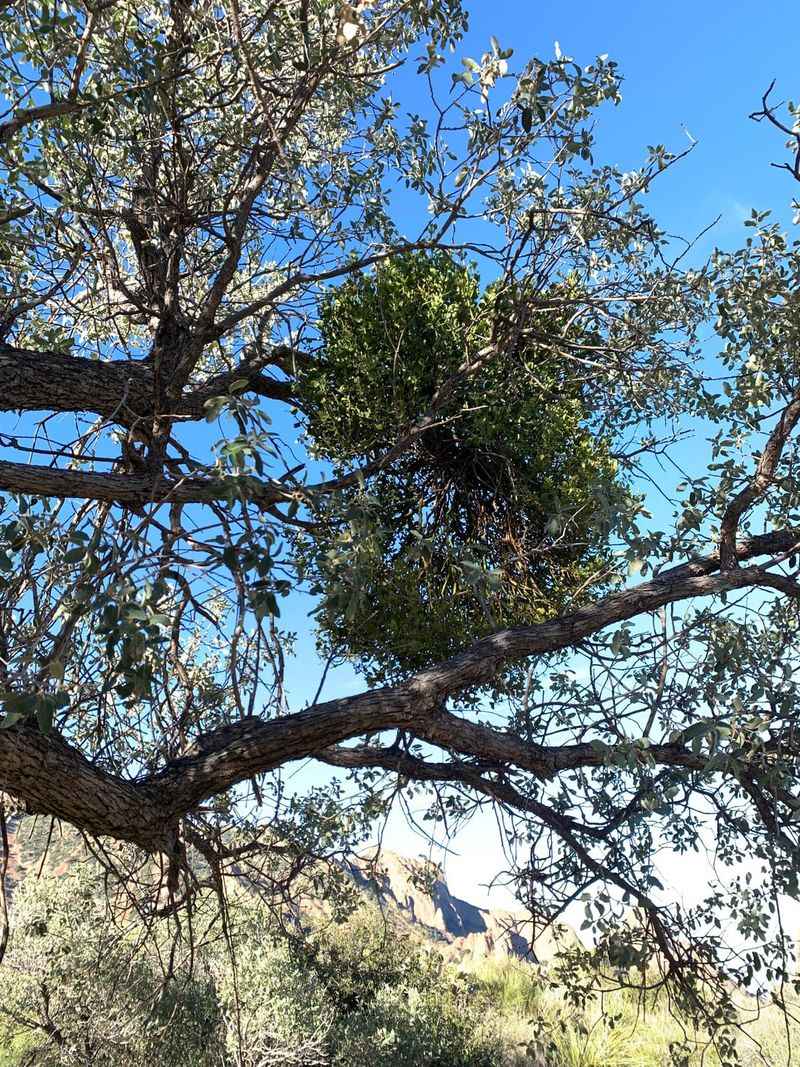If you’ve spotted mysterious balls of leaves in your Alabama trees, you might be wondering what’s going on. It’s a curious sight that’s not always what it seems.
These leafy clusters often have an interesting origin that surprises many homeowners. Let’s uncover the real reason behind this autumn phenomenon in Alabama yards.
1. Squirrel Winter Homes
Gray squirrels throughout Alabama build these leafy spheres as cozy winter shelters. They meticulously weave twigs and leaves into basketball-sized structures called dreys, providing protection from harsh winter winds and predators.
Unlike birds’ nests, these leaf balls are typically placed in tree forks near the trunk for extra stability. Alabama’s abundant oak trees make perfect locations for these furry architects to construct their seasonal homes.
2. Leaf-rolling Caterpillars
Certain moth caterpillars create smaller leaf balls as protective cocoons. They silk-stitch leaves together, forming a secure pod where they can safely transform into moths without becoming bird snacks.
In Alabama’s diverse forests, species like the oak leaf roller are particularly common. Their handiwork appears most frequently in late spring through summer when caterpillars are actively preparing for metamorphosis.
3. Fall Webworm Colonies
Those gauzy white webs encompassing leaf clusters aren’t spider work but fall webworm nests. These social caterpillars create communal silk tents around foliage, munching protected inside their leafy fortress.
Particularly visible in Alabama during late summer and autumn, these webs can envelop entire branches. While they look concerning to homeowners across the state, they rarely cause permanent damage to healthy trees.
4. Gall Formations
Those strange round growths aren’t nests at all but plant galls—abnormal growths triggered by insects. Tiny wasps lay eggs in leaf tissue, causing the tree to form protective chambers around the developing larvae.
Throughout Alabama’s woodlands, oak apple galls are particularly common. These natural phenomena create perfect spherical homes where insect young develop safely inside plant tissue that provides both shelter and food.
5. Bagworm Shelters
Bagworm moths create distinctive hanging pouches from silk and bits of foliage. These mobile homes protect the caterpillars as they feed and grow, with each species incorporating specific plant materials reflecting their host tree.
Across Alabama, these structures dangle like ornaments from evergreens and deciduous trees alike. The camouflaged bags, typically 1-2 inches long, allow the insects to blend perfectly with their surroundings while they develop.
6. Leafcutter Bee Nests
Leafcutter bees snip perfect circles from foliage to construct cylindrical nests. These solitary pollinators roll leaf pieces into tubes within tree cavities, creating separate chambers for each egg with pollen provisions.
Observant Alabama gardeners might notice the distinctive round cuts on rose or redbud leaves. These beneficial insects are important pollinators throughout the state, with their leaf-wrapped nurseries hidden away in natural tree hollows.
7. Witch’s Broom Formations
Dense, broom-like clusters of twigs and leaves result from fungal infections or mites disrupting normal growth patterns. These abnormal branching structures create ball-shaped masses that persist through seasons unlike temporary nests.
Common throughout Alabama’s diverse forests, witch’s brooms vary dramatically in size. While they might look concerning to hikers exploring the state’s woodlands, these natural formations rarely harm mature trees and can provide valuable wildlife habitat.

